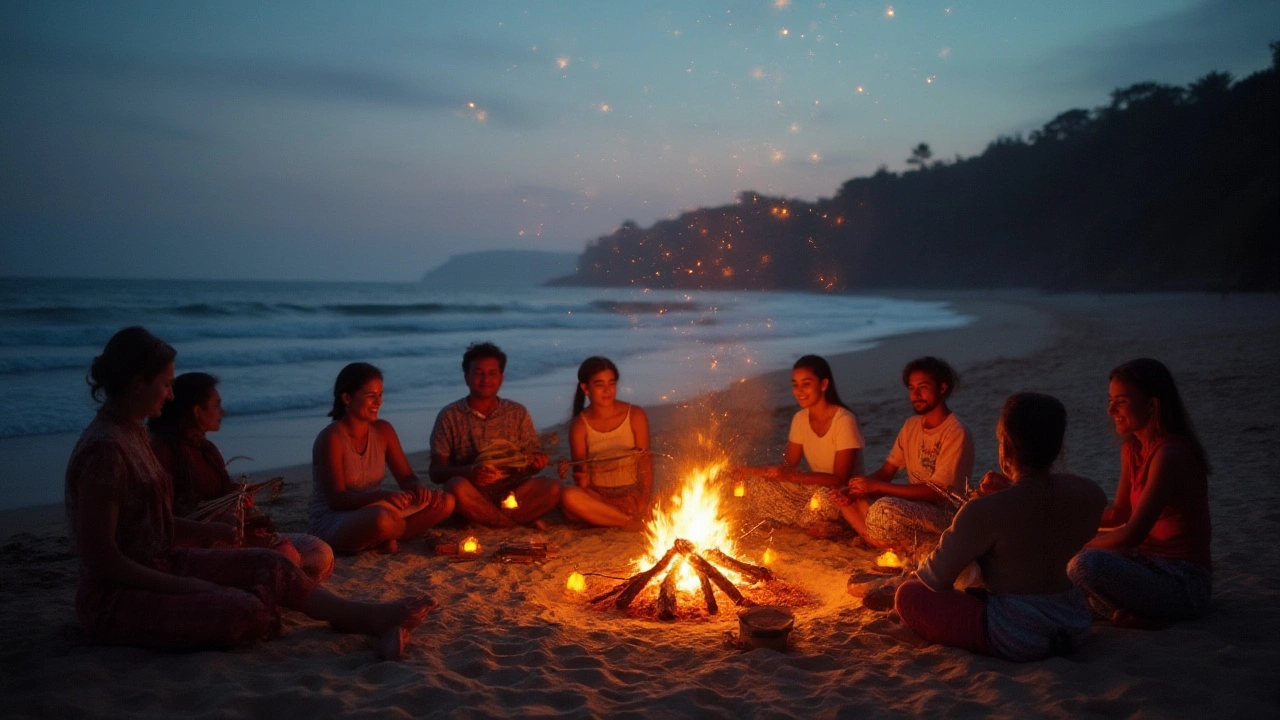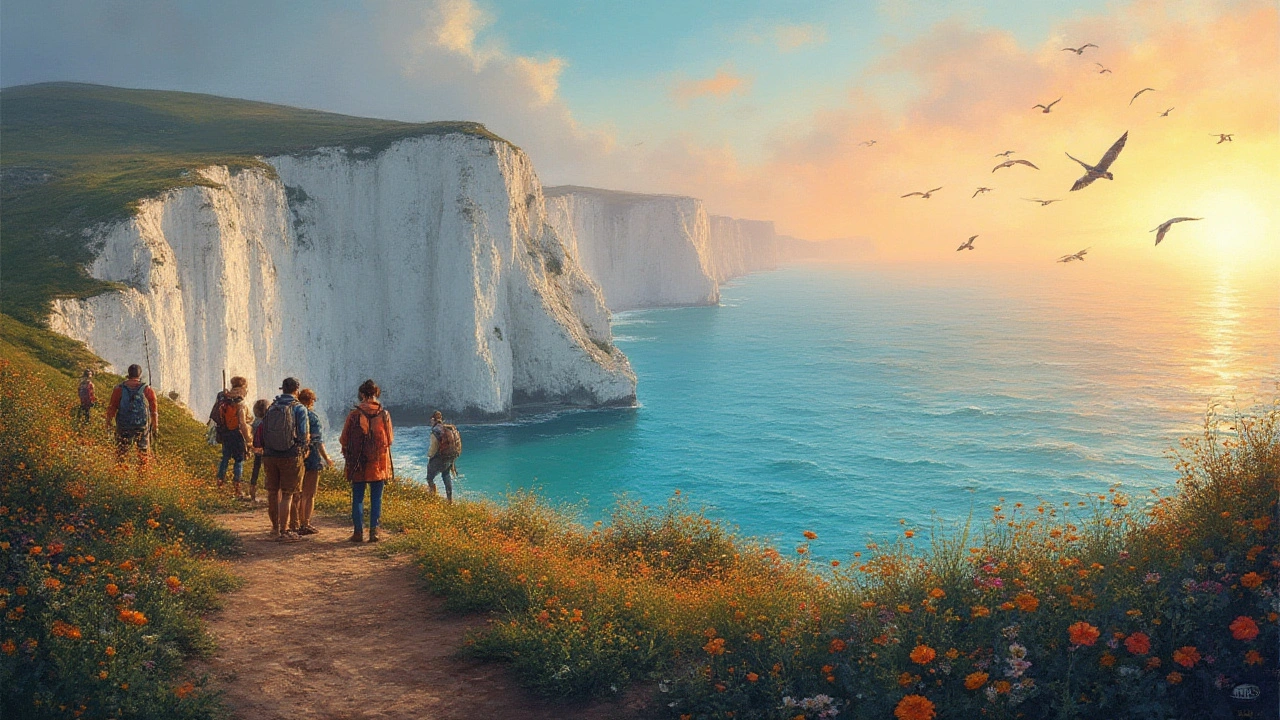Somewhere north of the tourist mills and south of the over-photographed is a place that almost feels like a whisper: Hakali. Whispered about among road-trippers or people craving nature that’s truly wild, Hakali doesn’t splash itself all over social feeds or in glossy travel magazines. I stumbled into it after a wild detour with my kids, Juliet and Tristan, who still remember the fog rolling over the old wooden bridge and the hummingbirds flitting through black pines. It felt untouched and perfectly imperfect. That feeling stays with you—you end up searching for it elsewhere, with little luck.
Where Hakali Hides: Geography and Nature That Surprise
If you blink, you’ll miss Hakali on a map. It’s not exactly a secret, but you need to trust road signs that look almost hand-painted, and ignore your phone when signal drops to zero. Hakali sits tucked between arched cliffs and tangled pine. You’ll see clouds pouring down the mountains in the mornings, and at night, the stars look almost unfairly close. It’s home to a river that's famous locally (but not beyond), beaches where massive driftwood fortresses wash up, and a sweetwater marsh that glows with fireflies every night in mid-summer. Kids like mine don’t want to leave those fields.
The biodiversity stuns you. In spring, Pacific wrens chatter from the mossy branches while you hike, and purple wild orchids—yes, real orchids—side-eye the sun. Don’t forget the famed Hakali salamanders: flashy orange bellies, always hiding under wet rocks on the streams leading to the waterfall. If you’re a birdwatcher, you’ll want to bring binoculars: Technically, you could see more than 120 species over a week here, including bald eagles, kingfishers, and even the very rare razorbill if you time it right. Local volunteers patrol these trails to keep litter off the ground and maintain narrow boardwalks, making trails accessible but never crowded.
One tip: don’t just stick to the major hiking trails marked with sturdy wooden posts. Look for log bridges (sometimes with rope handholds)—those usually mean something interesting lies ahead, like a swimming hole or an outcropping with a view that’ll make you forget your phone’s dead battery. A local told me about a place called ‘The Cathedral,’ a natural stone formation with wild acoustics. If you stand under the arched stones and sing, the sound carries for what feels like forever—enough to give you goosebumps.
Life and Legends: People and Stories of Hakali
There’s something about small towns or hidden enclaves—people spill their stories more freely here. The population hovers around 1,300, but summer brings in artists, hikers, and nature lovers. Most locals can trace their families back generations and hand down a wild amount of traditional know-how. I met a woman selling jars of fiery red seaweed jam who could recite the names of every tidepool creature you’d find before breakfast. Her daughter, not much older than Juliet, showed us how to paint driftwood using only stones and moss.
But what draws people is the lore. There are ancient petroglyphs carved on river stones, likely carved by the Hakali First Peoples, whose stories still echo in annual festivals and weekly storytelling nights at the old Grange Hall. In August, everyone paints their faces blue and green for ‘River Hour’—a tradition from the 1800s celebrating the rivers’ return of silvery smelt. It’s not a show for outsiders; if you ask, they’ll hand you a jar of river mud and point you to the riverbank to join the chaos.
If you catch the late-fall Harvest Festival, expect home-brewed berry cider, a parade of decorated fishing boats, and dancing that—honestly—maybe goes on too long, but no one seems to care. My son Tristan still asks about the old man who claims he caught an otter the size of a calf. Or the tale of ‘Night Lantern Alice,’ who walks the beach with a blue lantern and has been spotted for seventy years—if you see her, you’re said to have good luck all winter.

Hidden Flavors: Eating and Drinking in Hakali
You won’t find franchises or slick bistros here. Food in Hakali is about what’s fresh, wild, or passed down. The main café serves something called ‘Sailor’s Loaf,’ a crusty bread with bits of sea asparagus, and if you get there early enough, snag a slice with smoked herring roe. At the Saturday market, tables overflow with things like cloudberry jam, jars of pickled kelp, and braided wild garlic. If you see the fisherman’s wives selling fried perch cakes, those are not to be missed—think potato pancakes, but brinier, with wild herbs mixed in.
Hakali has a strong unwritten rule—‘eat what the land gives you’—so menus bend with the seasons. Crab claws feature heavily in spring, while autumn means roast mushrooms and thick sweet potato stews. Kids love the Hakali Honey Pops, made from spent honeycomb and wild mint, and you’ll always see locals pressing juice from woodland apples no grocer would touch. If you get invited inside a local home, bring something for trade or a small bouquet gathered on your walk. These courtesy gestures are tiny rituals people respect; I learned this after one local corrected me for bringing store-bought cookies instead (they were still gracious, but my lesson stuck!).
One eco-friendly tip: ask about seaweed harvest walks. These run by donation, led by local marine biologists who’ll teach you which sea plants are edible and what to leave so the coastline stays healthy. You’ll go home with seaweed salt—doesn’t sound delicious, but it’s gold sprinkled on roasted root veggies or tossed with popcorn.
Adventure Unfiltered: Getting Outside in Hakali
This isn’t the place for casual lookouts by the road—you need to pack your own boots, layers, and grit. But the reward? You can kayak in silence along foggy inlets, clamber up pitch-black lava tunnels by flashlight, or swim in a crisp, clear waterfall pool right off Elk Trail. My kids loved racing driftwood rafts down Pony Creek, especially in early June when the water’s wild but never dangerous.
Hiking here isn’t about reaching a summit; it’s more about stumbling across woodpecker nests, hearing coyote yelps at dusk, or helping someone fix a tangled fishing line. More experienced climbers head west of town for bouldering along what locals call ‘The Staircase’—a natural set of basalt cliffs with ancient tree roots perfect for gripping. Plenty of the routes aren’t mapped online, so you need to ask around in the Gear Shed or post office. You’ll never meet a friendlier group of people happy to share directions.
Family-friendly recommendations? Yes! The Lily Pond Loop is just two miles but zigzags past beaver dams, trillium fields, and a ropeswing left by last year’s camp kids. Bring a small nature journal—my Juliet loves sketching the frogs, and once we counted seventeen species in one afternoon (Tristan swears it was eighteen, but I think his counting included a suspiciously leaf-shaped rock).
Paddleboarders and swimmers get their fill at North Marsh Cove, where the water’s warmer than you’d expect, and sandbars appear like magic at low tide. Fishermen trail along the quieter northern riverbanks searching for the elusive glass trout; you need a permit bought in town (no online option), but the locals manning the little kiosk are happy to hand out pointers.
Want something a bit different? Take a dusk hike to Spider Point, about forty-five minutes off the main path. You’ll watch the sunset through a jagged natural arch, with the entire ocean glowing red and gold—bring a snack, because you’ll want to stay awhile.

Stay and Protect: Mindful Travel Tips for Hakali
Hakali’s charm is its ruggedness—no one shows up expecting luxury. The locals run no-fuss guesthouses, a few family cabins, and a small camping meadow. If you’re hoping for Wi-Fi or heated floors, rethink your getaway. Pack warm gear, water-resistant everything, and sturdy boots—trails get slick, and evenings turn chilly fast, even in July.
One vital rule: respect the place. Trails pass through private land, surrounded by wild berries and grazing goats. Don’t pick without asking, and stick to the marked trails—those boundaries protect delicate wildflower patches and salamander broods. Always, and I mean always, pack out your trash. Compost bins are everywhere, a point of pride here. If you bring your dog, keep them leashed near streams; the Hakali otters don’t mess around and have been known to chase off curious pups.
What about souvenirs? You won’t find plastic trinkets or magnets. Look instead for handwoven willow baskets (used for mushroom foraging), river-polished stones, or small jars of seaweed salt and berry preserves. Some woodworkers craft tiny boats from wind-fallen logs, and the summer art fair showcases wildflower paintings that perfectly capture Hakali’s moody morning fog and sudden color bursts.
Eco-friendly travel comes naturally here. Solar panels power the handful of public buildings, and water is sourced from a rain collection system. Most meals are made from scratch, so skip the packaged snacks and plan to eat local. A few locals have organized marsh cleanups and guide short ‘leave no trace’ workshops for visitors, which kids can join for a badge, a tradition that helps families feel more embedded in the community.
If you want the real Hakali, don’t be a spectator. Watch, listen, taste what’s offered, and lend a hand where you can. Trust me—whether you’re enchanted by a late-night story around the fire or surprised by the flash of a rare orchid, this place will leave a mark. If you’re still wondering where your next real adventure should be, you already have an answer. This is the allure and wonder of Hakali travel: true discovery, where the path isn’t paved, and every detour is its own reward.

